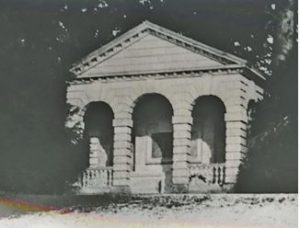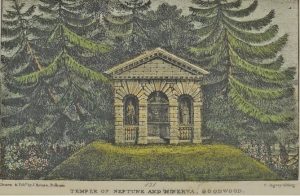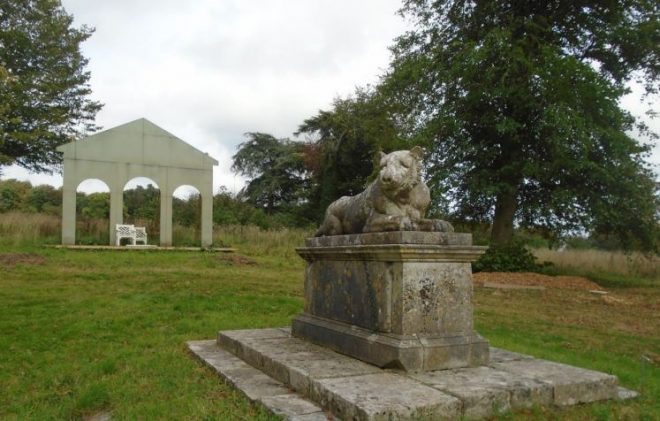Roman Goddess gets new lease of life in South Downs as temple is approved
August 19, 2024

A beautiful temple dedicated to the Roman Goddess Minerva is to be rebuilt on the Goodwood Estate.
Planning Officers at Chichester District Council, working on behalf of the National Park Authority, have been working with the Goodwood Estate (pictured above) on the reconstruction of the Temple of Minerva.
The temple was constructed to house an important Roman artefact, called the “Cogidubnus Stone” or the Neptune and Minerva Stone, which was unearthed in Chichester by workmen digging a cellar under a house on St Martin’s Lane in 1723.
Charles Lennox, the 2nd Duke of Richmond and a Fellow of the Royal Society, was a keen supporter of antiquarian investigations and was entrusted custody of the stone.

The Duke subsequently arranged for the construction of a pedimented temple that was to house the stone and included a statue of Neptune, Roman god of the sea, and Minerva, the goddess of wisdom, trade, medicine and the arts.
Situated in the High Wood, an enclosed space to the north of the house, the temple was built on an artificial mound and is visible in paintings from the mid-1700s.
The temple stood for more than a century and a half and the reasons for its destruction are unknown, although it’s said that the Duke had the temple demolished following a complaint from King Edward VII that the temple spoilt the view.
In 1907, the Neptune and Minerva Stone was presented to the City of Chichester by the 7th Duke of Richmond, where it was and still is, set into the wall of the portico of the Council House (Assembly Rooms) in Chichester.

When the temple was taken down the statues of Neptune and Minerva were sold, but were bought back for the Goodwood Estate in 2004.
The proposal to resurrect the temple, using much of the original fabric of the structure, has been promoted by the present Duchess of Richmond.
The original siting was discounted because subsequent additions to Goodwood House have meant the historic objective and legibility of it being placed in its former position has been greatly diminished. The site chosen for the re-erection of the temple is at the convergence of several rides within the wider historic parkland.
The focal point of the clearing is a Grade II-listed Lioness Statue, which commemorates a deceased lioness, a favourite animal in the 2nd Duke of Richmond’s renowned menagerie, which was located close to this statue.

John Saunders, Development Manager (National Park) at Chichester District Council, said: “Considerable care has been taken as part of the planning submission to ensure that the setting of the Lioness is complemented by the re-erection of the Temple of Minerva, being set some distance away from the statue, so that it forms a framed backdrop to the statue itself.
“The proposal was subject to detailed consultation with Historic England, who were supportive of the proposals. The re-erection of the Temple of Minerva would restore some of the historic legacy of the 2nd Duke and continue the Estate’s tradition of feature buildings and structures found elsewhere in the historic park.”
And John added: “The proposals were initially the subject of an application for pre-application planning advice where any issues likely to arise through the planning process could be resolved. This was followed by the formal planning application for the reconstruction of the temple which was subsequently approved. This a good example of collaborative working and highlights the benefits of the SDNPA’s pre-application planning advice scheme.”
With thanks to source material and research by Timothy J. McCann, James Rouse, as well as the Goodwood Estate and Trustees of the Goodwood Collection.
